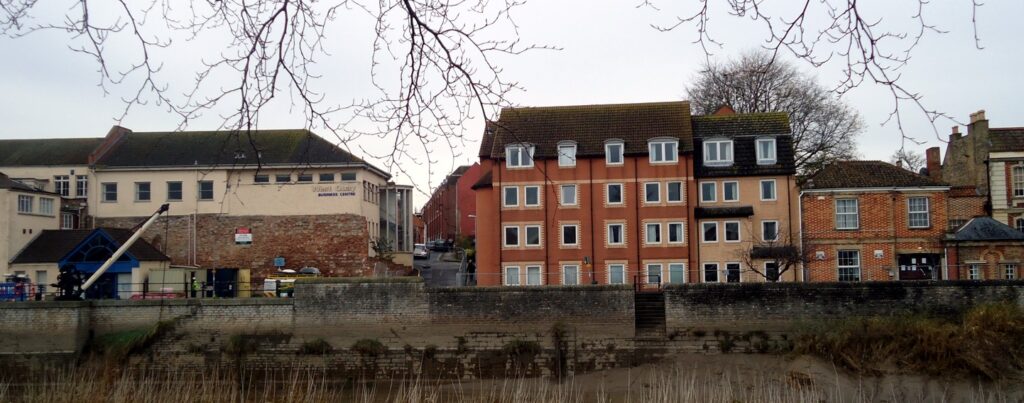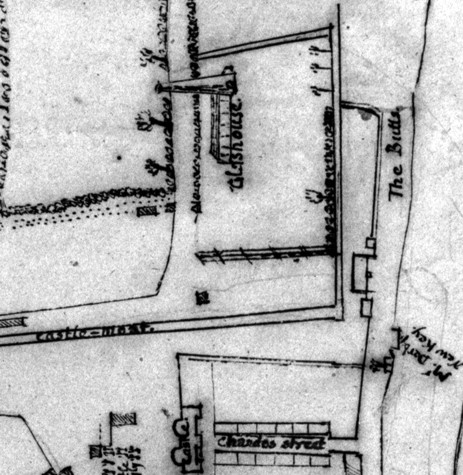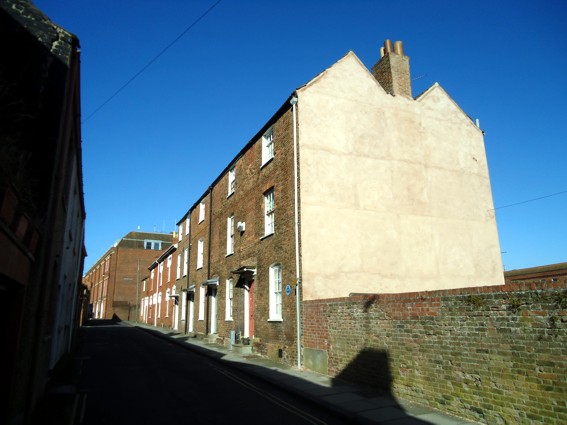
Peter Ellis’ 1984 excavation found the southern edge of the northern moat. A substantial wall was found to run directly across the moat, made at the same time as the castle. This was a weir or sluice to retain water within the moat. [1]
It has often been repeated, following the mistake of Collinson, that the moat was filled with water on each tide. [2] This however is impossible. Dilks rightly pointed out that the moat on the west side of the castle could not possibly be deep enough to take river water even during the highest floods. [3] The moat was instead filled with springs and surrounding water and held in by weirs. The misconception that the moat was tidal can be attributed to Collinson misreading Sprigge, who was describing the town ditch on the eastern, lower side of the river, which was presumably dug to defend that side of the town during the Civil Wars. If the moat of the castle was not tidal then it would require less maintenance to remove river silt and could also have doubled as a freshwater fishpond, especially on the northern side away from town. Fish, especially freshwater fish, were an important part of medieval aristocratic diet. Ashton and Dennison suggest that Somerset rhynes (drainage ditches similar in construction to the moat) were abundant water courses for fish, and their existence can explain the relatively few medieval fishponds in the county. [4] The river Parrett may have also provided salmon. [5]

The northern part of the moat can clearly be seen on Strachey’s map of the 1730s. The moat was no longer connected to the river by this time, the area below the weir having silted up over the centuries. Interestingly Strachey’s map shows another rhyne connected to the moat projecting north and this corresponds exactly with Ellis’ weir. This rhyne would presumably have been to aid drainage of the land to the north, helped provide fish and may have been defensive in some measure.

[1] Ellis, P., ‘Excavations at Friarn Street and West Quay, Bridgwater, 1983/84’ in SANHS (vol 129, 1985) p. 77
[2] Collinson, A History of Somerset, Vol III (London, 1791) p. 77
[3] Dilks, T. B., ‘Bridgwater Castle and Demesne towards the end of the fourteenth century’ in SANHS (vol. 86, 1940) p. 101
[4] Dyer, C., ‘Consumption of Freshwater Fish in Medieval England’ in Medieval Fish, Fisheries and Fishponds in England, Aston, M. Ed., (BAR Series 182, 1988) p. 27
[5] Ashton, M. & Dennison, E., ‘Fishponds in Somerset’, p. 391
